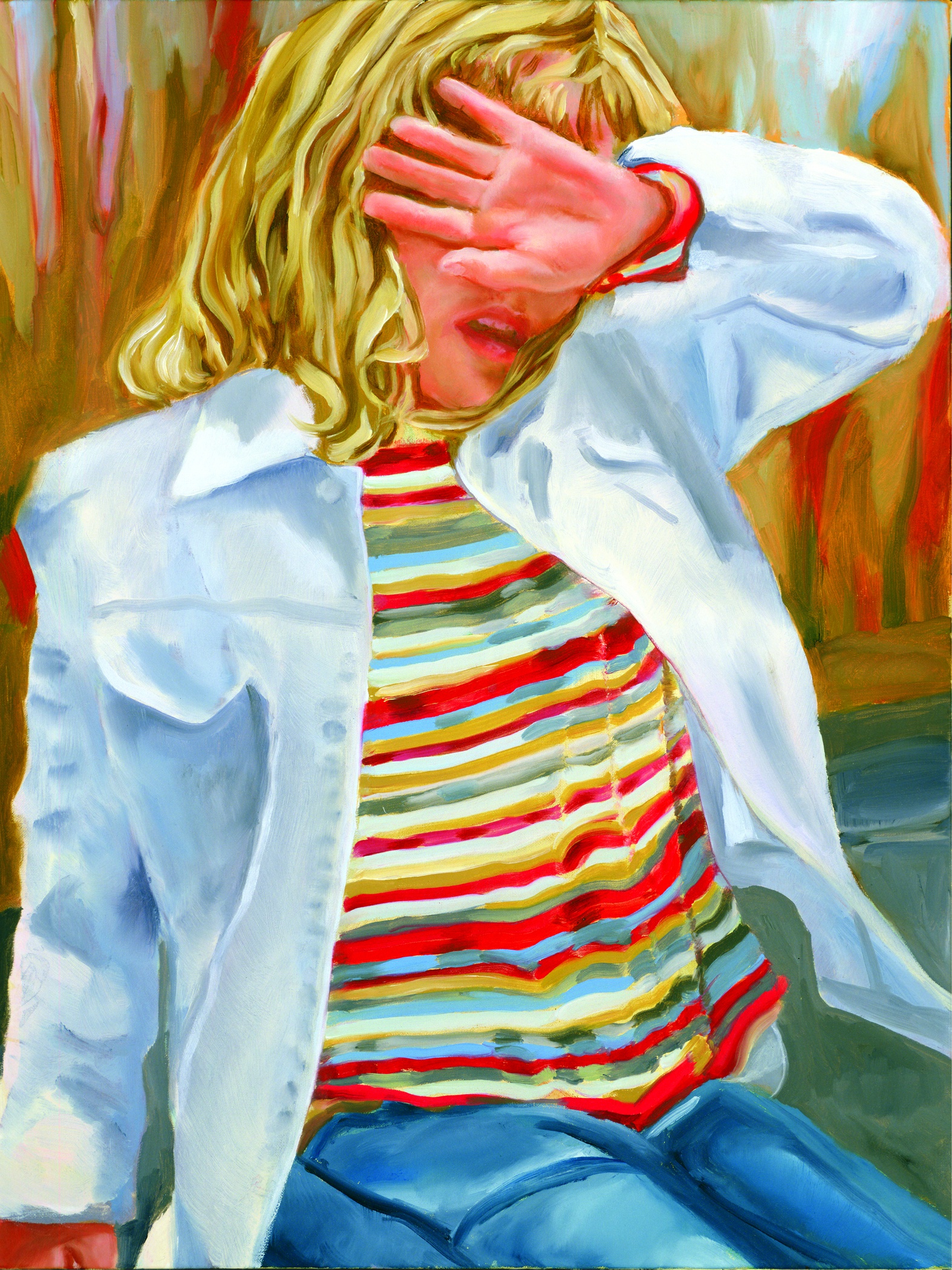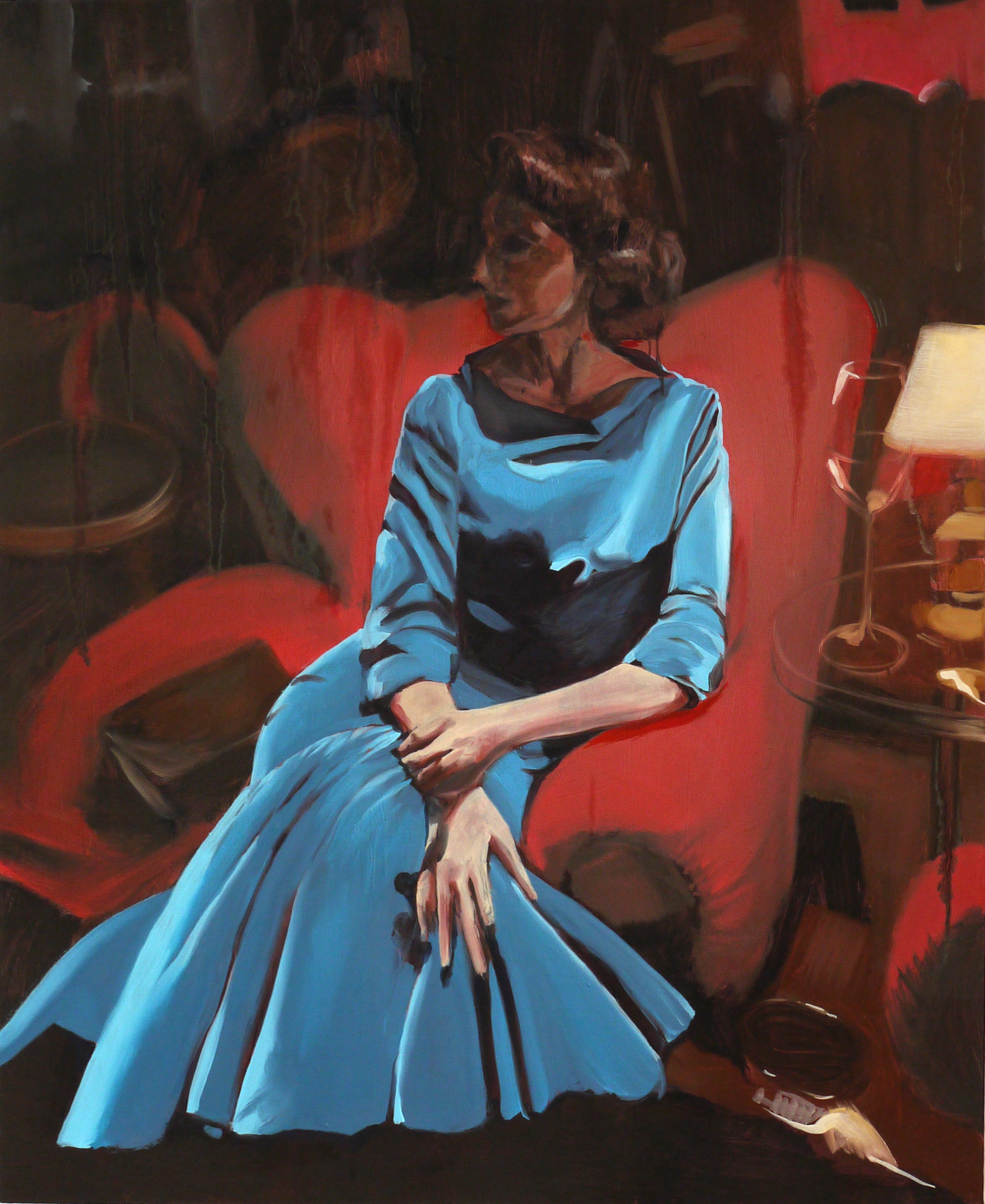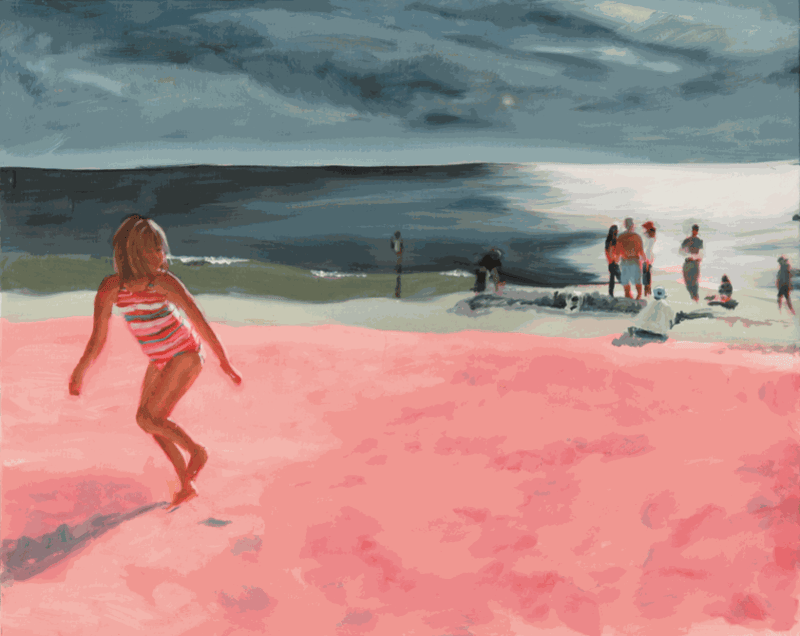With its candid, heartfelt depiction of female adolescence, Judy Blume's 1970 middle-grade novel Are You There God? It's Me, Margaret has been a guiding light for generations of girls making their tumultuous way to womanhood. Kelly Fremon Craig's 2023 film adaptation gracefully translates the narrative and spirit of the novel for the screen. Rachel McAdams plays Barbara Simon, the young heroine's mother, and an artist. Her paintings, seen extensively throughout the film, were selected by the Gracie Films production from the large body of work of Los Angeles artist Kimberly Brooks. I spoke with Ms. Brooks about her work on the film.
DANIEL MAIDMAN: I think our entire generation (generation X) read Are You There God? It's Me, Margaret at around the age of its heroine. What was your experience with it? Can you tell us what it meant to you?
KIMBERLY BROOKS: Indeed, Judy Blume's Are You There God? It's Me Margaret was the Catcher in the Rye of our generation. My friends and I were all scared and excited to "become women". We read it more than once, and whole passages were memorized. Later in life, when I myself was a young mother with a daughter who would also be on the precipice of the exact same feelings and experiences, motherhood/childhood played a major role in my subject matter as a painter.
DM: How did it feel to contribute to a movie adaptation of this generational classic? Can you situate the experience in the context of your life and career as an artist?
KB: A few times in my life, I have received a correspondence where I wished so badly I could have picked up a phone (the one with a coiled chord) and call my younger self to tell her what was about to happen. This was one of them. I wanted to call up that flat-chested girl who loved to draw - the last one of her friends to get her period - and say, "You're not going to believe it. But you know that book you and all your friends are reading? Well, one day, you're going to be an artist and get a phone call and a producer will ask if they can use your paintings to etc., etc.…"
DM: Who chose the paintings and conceptualized the role they were to play in the finished movie?
KB: The director had the final say. I never met Rachel McAdams who plays the artist/mother who made the work. I submitted two rounds of painting collections as a presentation. My earlier work is more figurative while my current work is more abstract and cerebral. I thought they could have gone with my more recent landscape-oriented works but they opted for the former. Once we decided the direction, I submitted more paintings in the direction that they wanted including paintings in various stages in progress. Since most of these paintings are in collections all over the country, it was not practical to use originals, nevermind the issue of finding and borrowing them. Instead the production company used TIFF files and I allowed them to create them any size they wanted in order to have the option of positioning them best in the filmic space. I also negotiated to get the rolled up canvases of prints after the shoot was done.

Kimberly Brooks, Hay Ride
DM: What is the connection between the artwork featured and your experience of motherhood?
KB: As an artist, it made so much sense to me that a young mother would be making the kinds of paintings that I myself made as a young mother. At the time, I was both obsessed with my kids, fiercely ambitious and yet self conscious of making motherhood my topic. Even twenty years ago when I was starting, the topic of motherhood felt like ground breaking territory to entertain. I often felt like someone would open my studio door and say "Excuse me, we're the art police. This isn't really allowed and we'd like to give you a citation." We barely saw women artists' work, there were no coffee table books on the subject easily found like there are today. As a group, so many women artists had internalized Tracey Emin's blistering quote, "There are good artists that have children. Of course there are. They are called men…." That was in 2014. It's different now. I suspect the art world has amnesia about it but it was only in the last decade or two that motherhood as a topic has become truly accepted. I remember the gallery I was with at the time I made these works was praised in the LA times for having more than one female artist on its roster. This was only known, of course, because galleries were just starting to have websites and one could finally easily see who was representing who. It was usually all men and one female artist being represented at the most. It's completely different now.

Kimberly Brooks, Soho House
DM: Tell us your thoughts on the integration of the paintings into the visual design of the film: the integration of your sense of color, shape, and narrative into the framing colors, shapes, and narratives of the scenes in which your works appear.
KB: I thought it was accurate to have paintings all over the house in various states. That is something most artists do, especially when they're juggling motherhood. I used to have an easel set up in my living room and bathroom before I had a studio. I would hang my works or leave them on easels to dry. I love the one they chose for the living room featuring my son entitled Yosemite River. It was at a time in my painting life that I had a Post-It on my studio window that said "Stay Away from Bonnard" because I was getting very experimental with color and trying to restrain myself. The ultimate difference between having your paintings in a film versus in a gallery or even a book is that the viewer's the eye must linger first within the eye of the director and cinematographer. I thought the director, art director and cinematographer did a terrific job. It was an honor to be a part of the process.
DM: How closely were you involved in the production process?
KB: After they approached me, I received a paper script to get a sense of the character. Someone waited outside while I read it and then I gave it back. The mother character being an artist was new and more developed than in the book. It started with meetings with the art director who requested ideas based on my archive to present to the director. The director had already picked paintings from my website to point me in a general direction. I first pitched about twenty paintings from various stages of my career, focusing on my earlier figurative work from Mom's Friends, Technicolor Summer which focus on memory and motherhood in the wake of the 70s sexual revolution. I think we did that for 2-3 rounds. Then I added works on paper and images of works in progress related to the selected works so that they could show a progression.
Whether by coincidence or intuition, the director, Kelly Fremon Craig, honed in on this earlier work, the very same paintings I was working on when I too, like Barbara, was a young mother. The director also chose some portraits of women from The Stylist Project and Thread which is also very much in character as a young woman seeking and projecting versions of herself in her art. The paintings are prominent in almost every interior setting of the heroine's home and fittingly serve as a critical element of the story.
